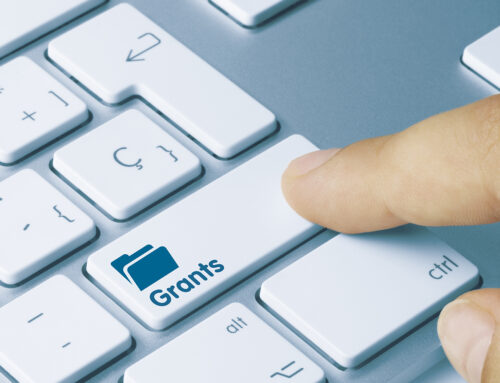
There are no participation trophies when it comes to grant funding.
Some organizations will win the funding and others will not. Organizations that consistently get funded start from the funder’s perspective when developing the application.
Winning applicants understand that funders are like investors, they are seeking quality strategies which will produce returns on their investment. Unlike the financial investor seeking a personal financial gain, the philanthropic or government funder is seeking to invest in programs that will produce a social return on investment. They expect some form of community impact for their money, such as improved schools, more jobs, cleaner air, or healthier residents.
This concept is not new, but the competition and accountability are greater. Therefore, only proposals with convincing arguments of success are likely to be funded. Just as a financial investor would not invest in a mutual fund without examining its performance data, philanthropic and government funders desire to invest in programs that can specifically demonstrate their results.
The Winning Proposal
A winning proposal leaves the funder with little doubts about the program’s ability to achieve a high social return on investment. The following five elements will portray to your funder that your program is a safe investment.
1. Focus on the outcomes: Outcomes are the level of performance or achievement that occurs because of the services your organization provided. Outcomes go beyond how and how many clients will be served. They outline how lives and circumstances will be changed because of this program. The best outcomes are aligned with the funders desired outcomes.
2. Include a logic model: A logic model describes logical linkages between your programs resources, activities, outputs, participants and short-, intermediate-, and long-term outcomes related to a specific problem or situation. This is often known as your theory of change. How does your program achieve your stated outcomes? Even if the proposal does not specifically ask for a logic model, including a graphical representation of how your proposed services will achieve the desired results is always a great idea.
3. Prove your effectiveness: Once you established how your program achieves outcomes, you need to prove it. Ideally, you should include existing data that demonstrates how your program is already solving the stated problem. If you don’t have your own data yet, use data from established research on similar programs and services. Clearly describe how your services are like the ones in those studies.
4. Establish a measurement plan: Your measurement plan should include more than one outcome measure. Identify a series, which include measures of participants, services, and then short- and medium-term outcomes. Describe the process and frequency you plan to gather and examine these measures. A measurement plan communicates that you are serious about achieving success.
5. Ensure quality: A major cause of poor program performance is lack of fidelity to the original plan. Staff changes, training issues, and other pressing matters often derail the implementation of the original program or service model. Specifically demonstrate how you will use your measurement plan to ensure the program is being implemented as described in your proposal.
Why They Win

The majority of funding applicants lack several of these five elements. They often solely focus on the activities the program will conduct and who they will serve. This type of application is like an investment funding manager who says, “invest in my funds, I’ll put your money in x”. Just like an investor is likely to not choose this manager, so is the philanthropic or government funder likely to pass on this application.
An investor is on the other hand, likely to place their money with the fund manager who says “I will put your money in fund X and here are the results for the past five years, and here is how often I will monitor this fund for you, and if it is not performing as it should, I will look for other alternatives to help you achieve your financial goals.”
This is exactly what an applicant is telling their philanthropic or government funder in their grant application when the proposal is clear about the anticipated outcomes, is based on a well-crafted logic model, proves the model can deliver the results, outlines a plan to measure progress, and ensures quality implementation. Your application with these elements is sure to stand out above all others and win the precious investments for your organization.
About the Author.
Today’s article was written by Sheri Chaney Jones, Founder and CEO at Measurement Resources Company.
Sheri Chaney Jones, is the author of Impact & Excellence: Data-driven strategies for aligning mission, culture and performance in nonprofit and government organizations and President of Measurement Resources Company. For over 17 years, she has improved the social sector through the use of measurement, evaluation, and organizational development. Measurement Resources helps organizations successfully collect, organize, and use impactful data so they can fully achieve their missions. Clients save public dollars, demonstrate effectiveness, and increase revenues as a result of working with Measurement Resources.






Leave A Comment